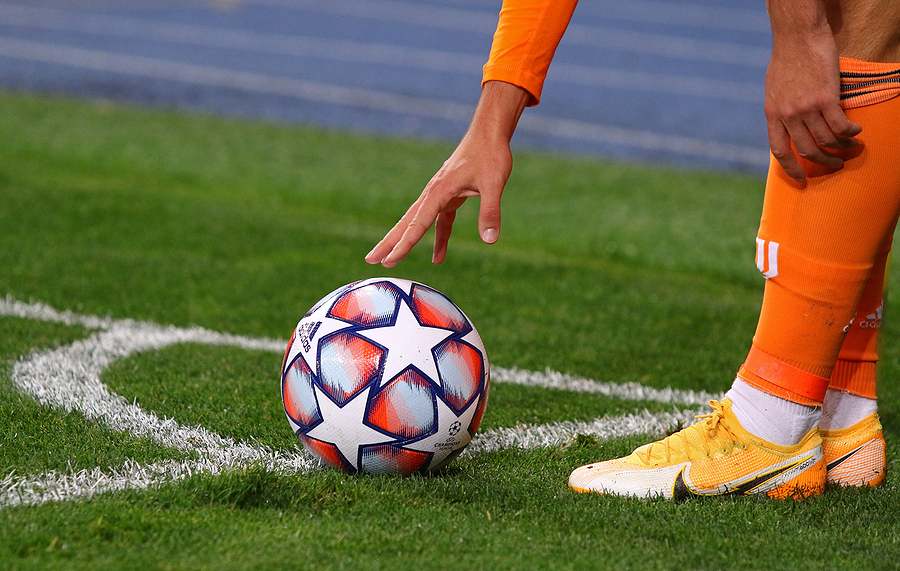“It ain’t about how hard ya hit. It’s about how hard you can get hit and keep moving forward.”
Rocky Balboa (Sylvester Stallone) in the movie Rocky Balboa.

Combat or “Fighting” Sports
One-on-one combat has been around for a very long time. They date back to the Ancient Olympic Games. Today we see an amazing array of combat or fighting sports which can be separated into striking-centred styles, more commonly known as stand-up fighting (e.g. Boxing, Kickboxing, Karate, Taekwondo, Kung Fu) or grappling styles (e.g. Judo, Brazilian Jiu Jitsu, Wrestling), which centre around what happens when a fight ends up on the ground. Mixed Martial Arts (MMA) is the product of striking and grappling styles combined. The best and hardest parts of both some would say.
When we think about how success in fighting sports is measured it really boils down to the athlete’s ability to hit and not get hit. To be really successful competitive fighters are ultimately required to anticipate upcoming attacks. This is most often based on visual cues, such as their opponent’s footwork, body and hand positioning and pace of movement around the ring. This feedback is then used to quickly select the most appropriate defence and counter-attack, which they then need to execute with speed, accuracy and power.
Fighting Sports Can Be Uniquely Challenging
The reason fighting sports are so hard is because humans naturally aren’t very fast responders. The average human reaction time sits anywhere between 200ms – 250ms. Seasoned fighters, especially those at the elite level, take less time than this to land a jab, body kick or initiate a take-down.
Fighting sports are also challenging in the sense that due to their one-on-one combat nature the risk of physical injury is very real. And it’s arguable that a fighter’s ability to overcome setbacks (e.g. copping a powerful body shot) and deal with adversity (e.g. one half of the crowd cheering for the other guy) is a relatively more significant predictor of success when compared to many other sports. What I’ve come to see through my own experiences, both as a point and full-contact fighter in my younger years are that often it is the athlete who demonstrates a higher level of what we call mental toughness that comes out on top. This psychology often trumps other areas of fight preparation such as physical conditioning, skill execution or strategic wisdom. So, how we can build this mental toughness to ensure that on fight day we’re giving ourselves the best chance for success?
Fighters, Thoughts, Feelings and Actions
One of the most common questions we get as a collective of sport and performance psychologists is “how can I change my thinking to be more positive?”. Or “how do I stop having negative thoughts?”. The simple answer is, you can’t. And even if you could it wouldn’t help you much anyway.
What we now know about how the human mind is designed to work is that when we find ourselves in high-pressure situations or one that we’re emotionally invested in, all signs of rational thinking go out the window. One thing that humans are really good at doing in the lead up to important events is thinking irrationally, illogically and ‘worst case scenario’. I will not bore you with a full anthropological explanation as to why this is the case but ‘in a nutshell, it boils down to the survival benefits of predicting and assuming danger even if there isn’t any.
One common misconception among many of the athletes and performers we work with is that in order for us to have an effective performance we need to reduce, eliminate or change these unhelpful thoughts. The problem here is that trying to change or eliminate unhelpful thoughts doesn’t work, and when we attempt this we often end up going around in circles. If I told you not to think about the colour blue for the next 10 seconds, could you do this? Do we possess the ability to not think of a thought? I can guarantee that anyone who tries to not think about something ends up thinking about it even more. So for a fighter who’s having doubts about their ability to win going into a fight, or can’t seem to shake the idea of how a loss might impact their career and what others might think of them, the real question here is can we still have an effective performance despite having unhelpful thoughts? At Condor Performance, our answer to this is an emphatic and empirical yes.
Acceptance And Commitment Therapy (ACT)
The therapeutic framework we like to borrow most from is called Acceptance and Commitment Therapy (ACT). Under the ACT approach, we acknowledge that actions can certainly have an impact on how we think and feel, however, thoughts and feelings needn’t have an impact on our actions. In other words, we can train our mind and body to still have an effective performance in the presence of very uncomfortable thoughts and emotions. With some guided practice, both in our everyday lives and subsequently in sport-specific training environments, we can train ourselves to accept any uncomfortable thoughts or emotions we have and still commit to our rehearsed actions.
You Don’t Have To Be Fearless To Be A Fighter
For anyone who has ever seen a semi-professional or professional fight, you’ll have witnessed what is referred to as the ‘ring walk’. Once a very straightforward and relatively unimportant stage of the fight, it’s now one of the most exciting and significant stages of fight preparation. Today, we see choreographed entrances into the ring, often involving some sort of dance or Martial Art-like movements against a background of lights, smoke and dramatic music, before the fighter eagerly climbs the stairs of the ring, parading around to soak up the energy of the crowd. However, one can argue that what stands out most about the walk-out is the level of confidence that is often displayed by the fighter. Their body language, facial expressions and walking style almost always convey to the audience and their opponent a sense of fearlessness and determination as they enter the ring. What many onlookers don’t realise is that this is basic ACT in practice. And in many cases, it’s their mastery of this mental skill that has helped them rise to the top.
A footballer I once worked with described the ring walk as an “act”, and this really stuck with me – why? Because when a fighter confidently completes the walk-out and enters the ring, only one of two things can be happening:
- He or she both looks 100% fearless and is 100% fearless
- He or she looks 100% fearless but is not actually 100% fearless
Fake It ’Til You Feel It
Fact – not every fighter who confidently walks into the ring is also feeling 100% confident. So the answer to “how do fighters fearlessly enter the ring” is simply, they don’t. Most of the time, they are actually battling a flood of uncomfortable thoughts and emotions, just like athletes across any other sport and in just the same way we do in our everyday lives when faced with a situation we’re uncomfortable with (e.g. public speaking). The fighters that make it to the top don’t necessarily have the ability to change their thoughts and feelings, they’ve really just mastered the ability to walk into the ring and perform well in spite of these. A lot of this simply comes down to body language combined with basics thought acceptance. This is something we at Condor Performance like to call “Fake it ’til you Feel it”.
Those at the elite level typically acknowledge that the amount of influence they have over their thoughts and feelings is very minimal. Rather than letting uncomfortable thoughts and emotions stop them from performing, they’re able to shift their focus to where their influence is highest, that is, on their actions. So essentially acting in a way that is incongruent with how they may be thinking or feeling.
At Condor Performance, we are very lucky to have Sydney based Brian Langsworth as a member of our growing team of psychologists. Apart from being an outstanding performance psychologist, Brian is also a former actor and therefore brings a huge amount to the team when it comes to the practicalities of acting, body language and the like.
Shifting Our Focus …
Because most of our influence lies within our actions, it’s really important for fighters to evaluate their past performances as well as set expectations for future performance around their ability to execute the actions they practice every day in training and on ‘fight day’.
Performance can be evaluated in one of two ways. Processes (i.e. actions and effort) or outcomes (i.e. results) and one of the trickiest things about fighting sports is that success is often outcome-based only. There are no prizes for who has the best footwork, who has the fastest or most creative striking combinations or who can perfectly execute a triangle choke. Success in combat sports is results-focused, that is, it’s based on wins and loses, whether that be knockout, decision, submission or Technical Knockout (TKO).
Due to this, fighters often become caught up in the possible outcome of an upcoming fight and whether they’re going to win or lose. The issue with this, mentally, is that there are just so many things that contribute to an outcome of a fight. For example, the opponent, the referee and judges, the spectators and all the other things going on around them to name the most obvious. Shifting our focus to what we know best, our actions and effort in the ring can give a fighter an increased sense of “control” in a very unpredictable and uncertain situation.
What Constitutes a “Good Fight”
For fighters with values grounded in the results of their performance, reframing the way they evaluate past performances and the way they set expectations for upcoming performances to be more aligned with actions, effort and processes rather than outcomes or results is an important first step in empowering them in the lead up to a fight, during a fight and after a fight.
That’s why one of the first conversations I’m having with fighters is usually around what actions and processes constitute a good performance in their eyes. More specifically, what are the attacking processes (e.g. striking, kicking, hand positioning, footwork, countering) and defensive processes (e.g. head movement, body movement, blocking, catching, evading) that give them the best chance of success if executed consistently across the fight, and what practical strategies can be employed to ensure they’re able to execute these processes under the pressure of an important match.
Give Yourself A Fighting Chance …
If there’s one message I’d like you to take away from this it’s that success, particularly in fighting sports, is almost always determined by the athlete’s ability to still have an effective performance despite feeling uncomfortably nervous and having doubts about their ability to win. I remember my principal supervisor and Sport Psychologist Gareth J. Mole once saying “They don’t hand out gold medals for who was feeling the best” and this is especially true for fighters. It’s not about who feels the best on fight day, it’s about who can put together the best performance on the day despite how they’re feeling.
If you are a combat sports competitor or coach and would like to expand on these ideas then Madalyn is available for private performance psychology coaching either in person in Sydney (NSW, Australia) or via Webcam for those physically located elsewhere. The best way to start the process is by filling in this short enquiry form and mentioning your preference to work with “Madalyn Incognito”.


